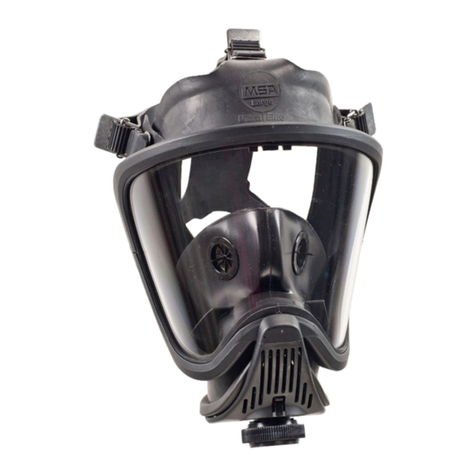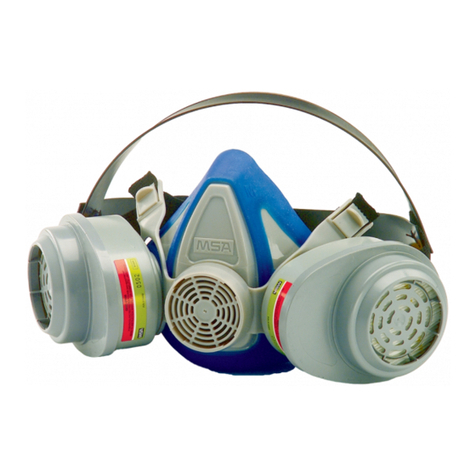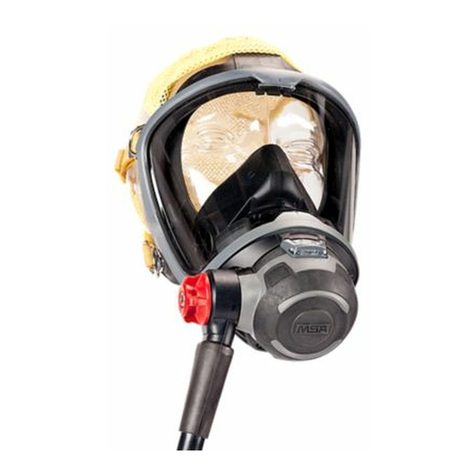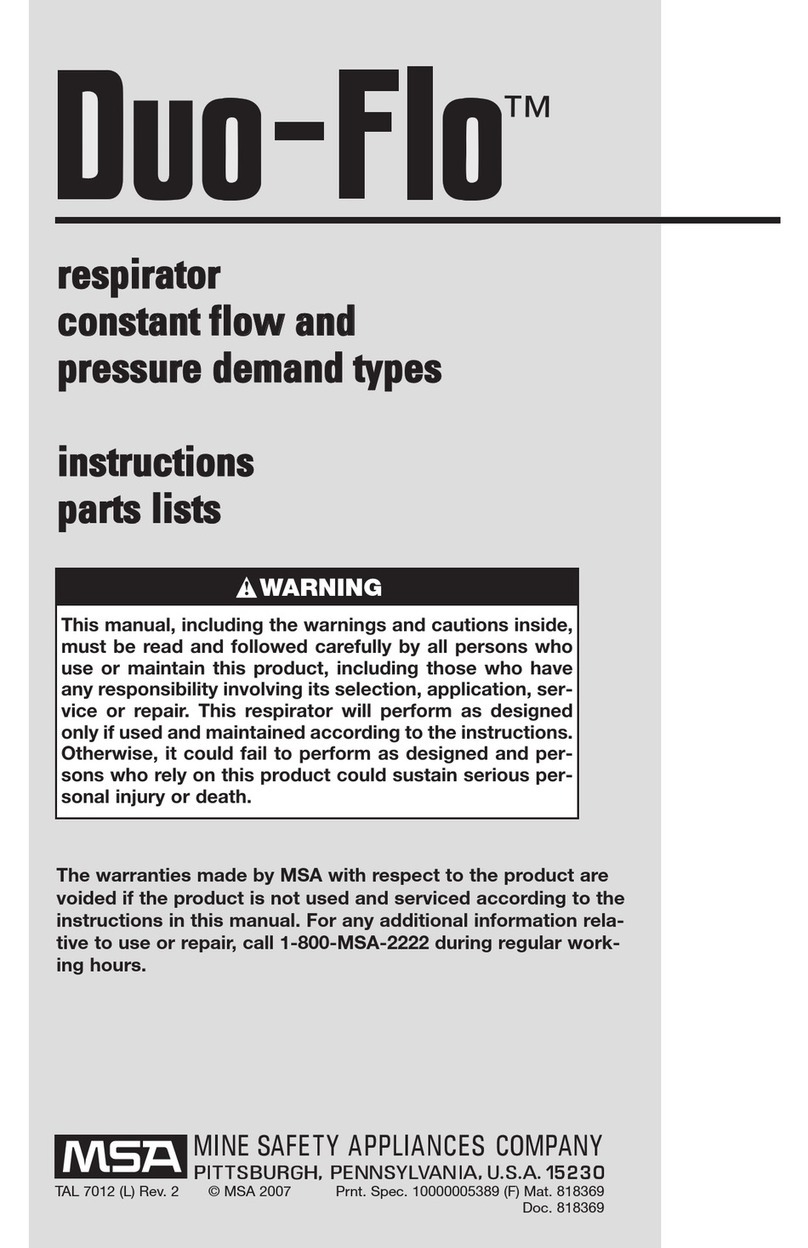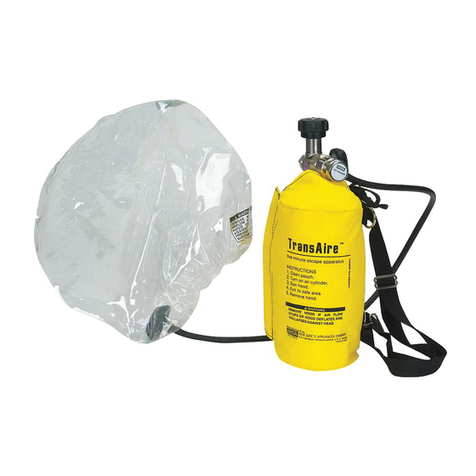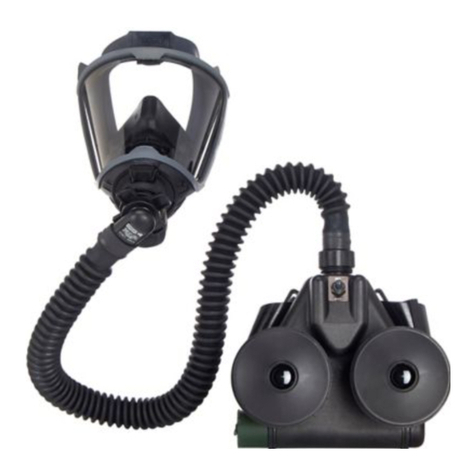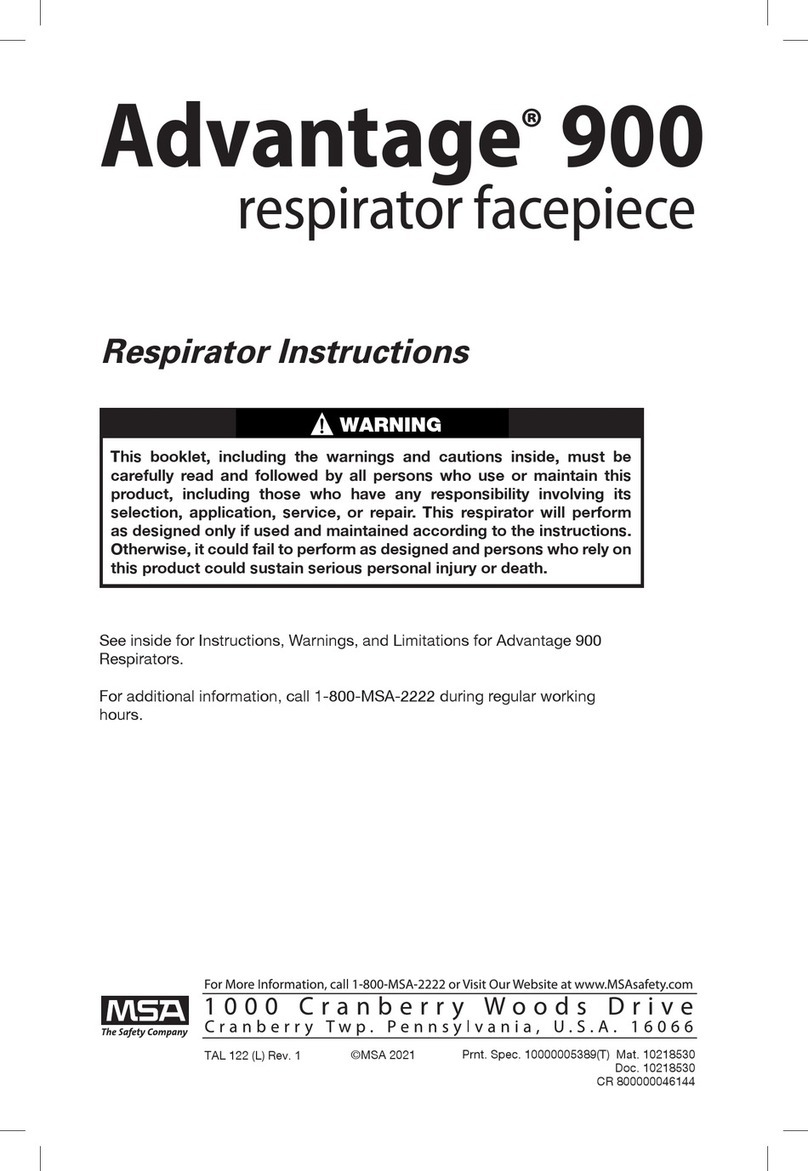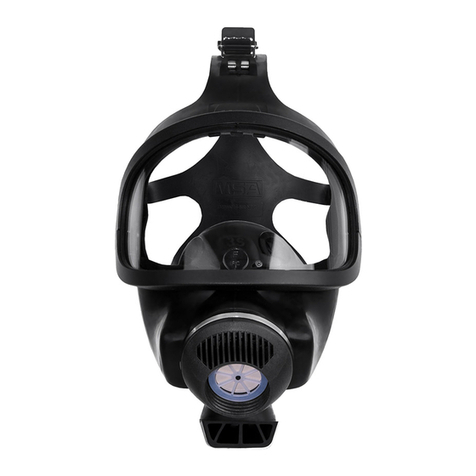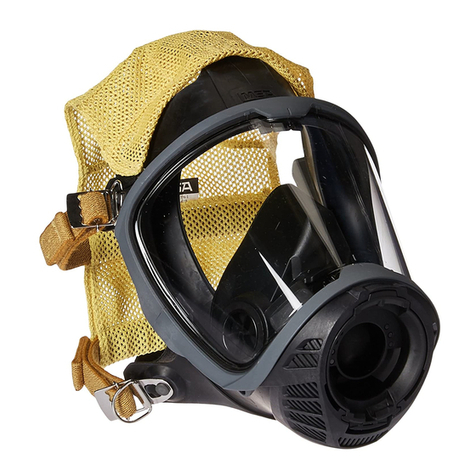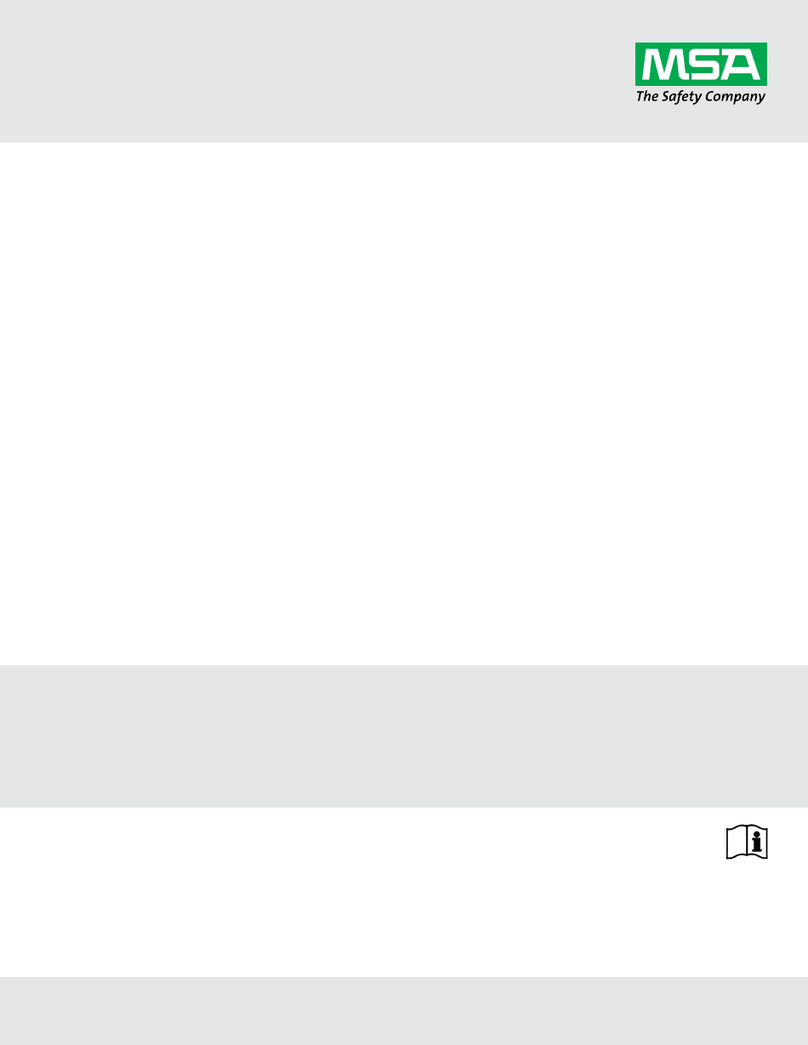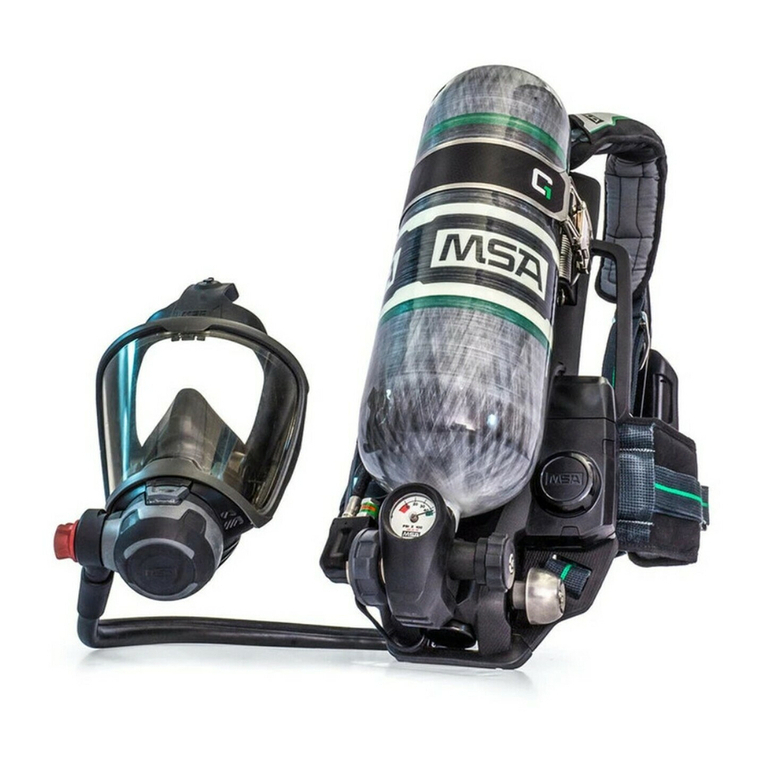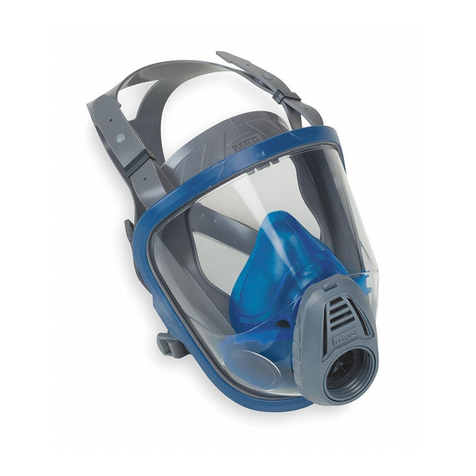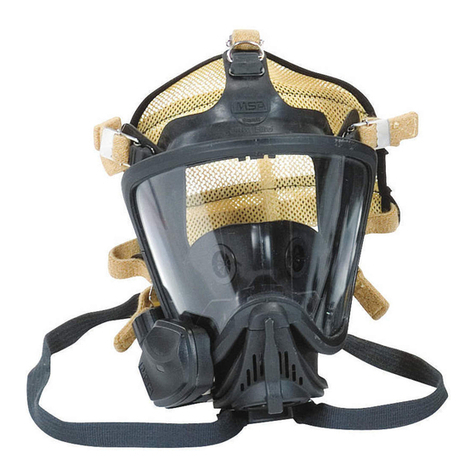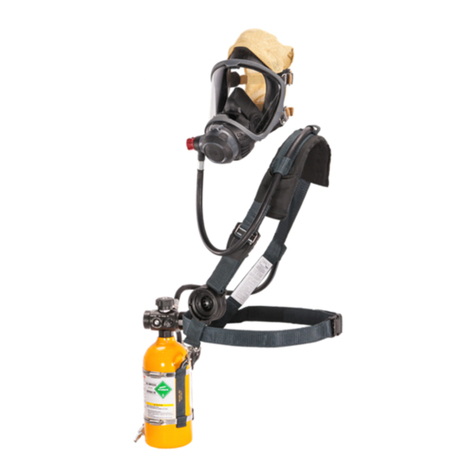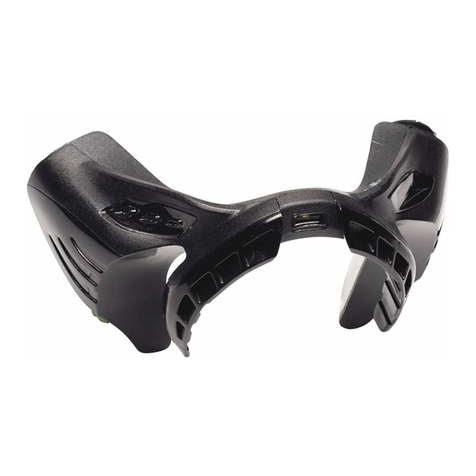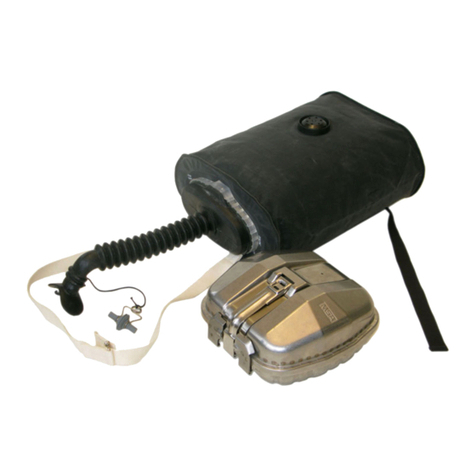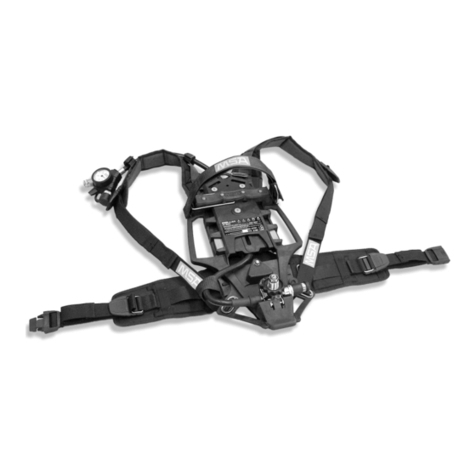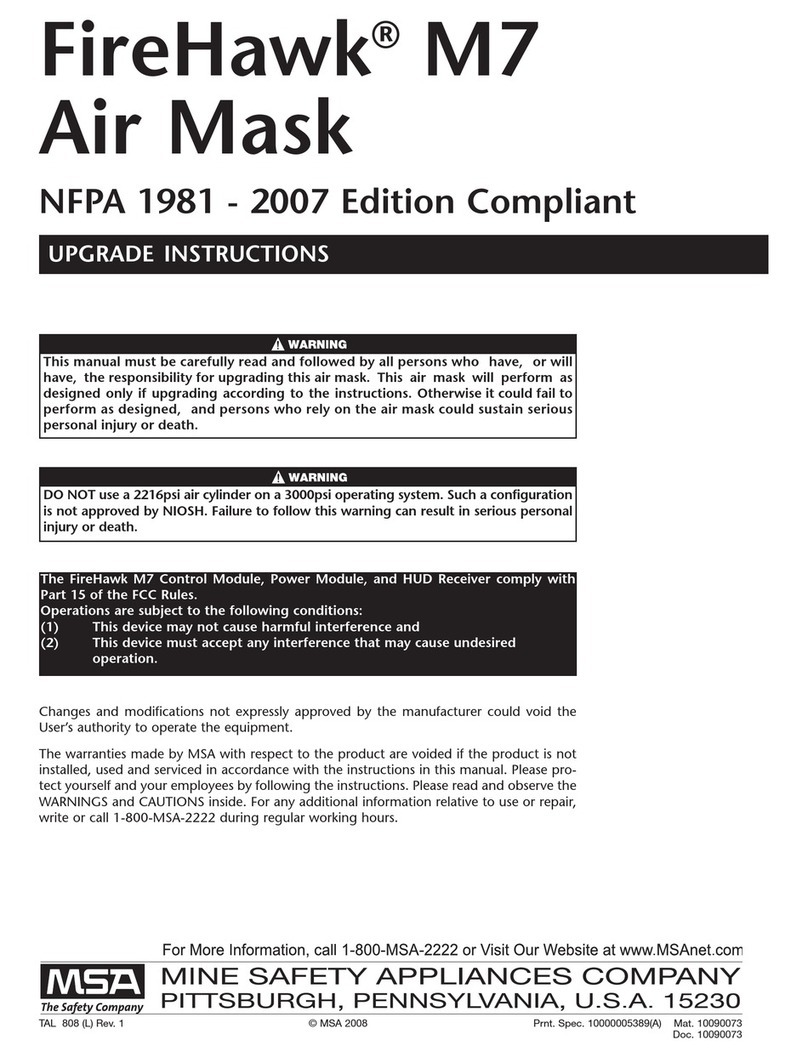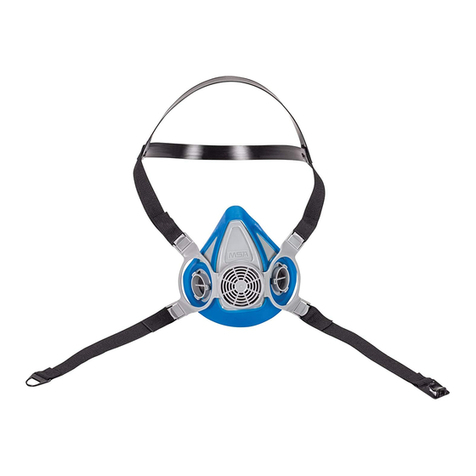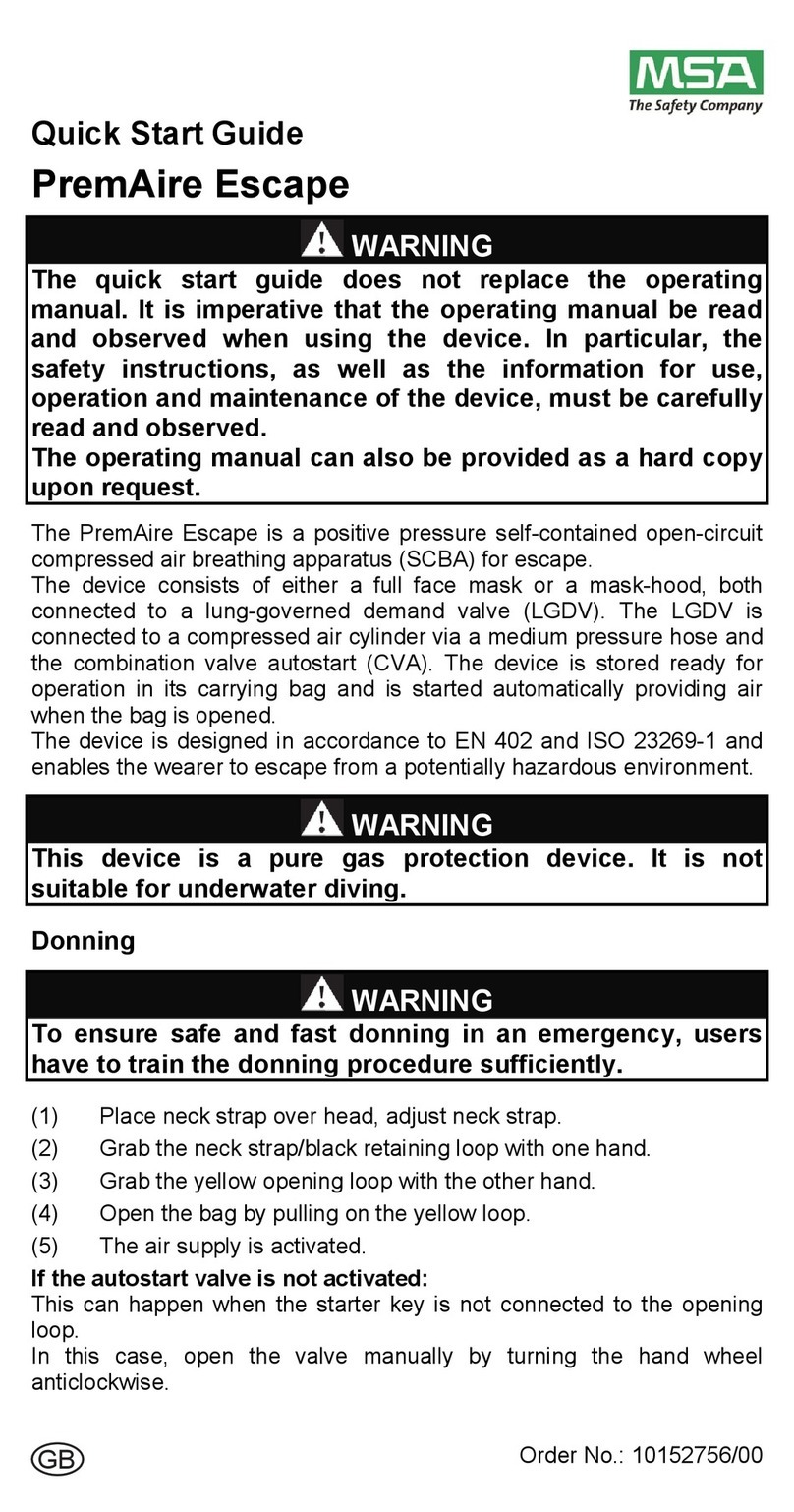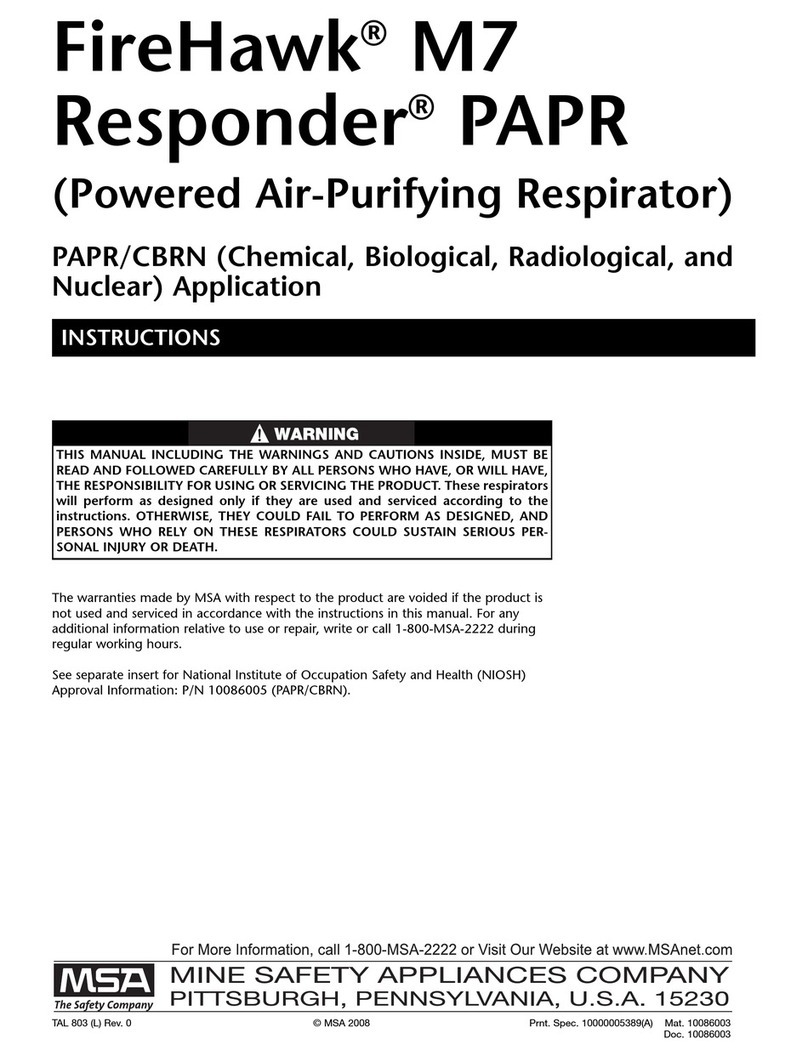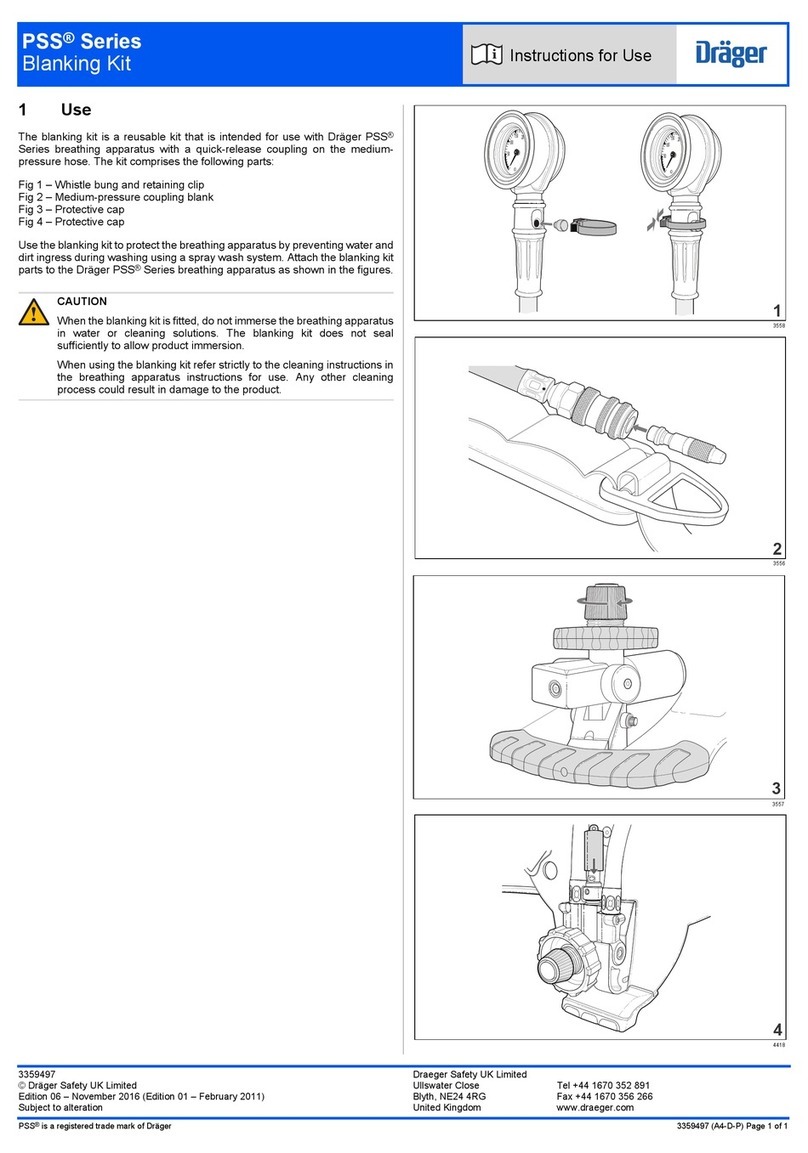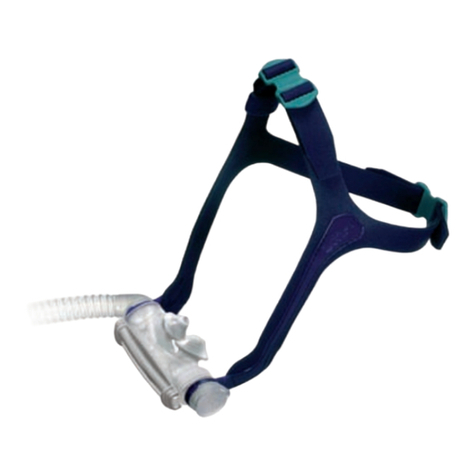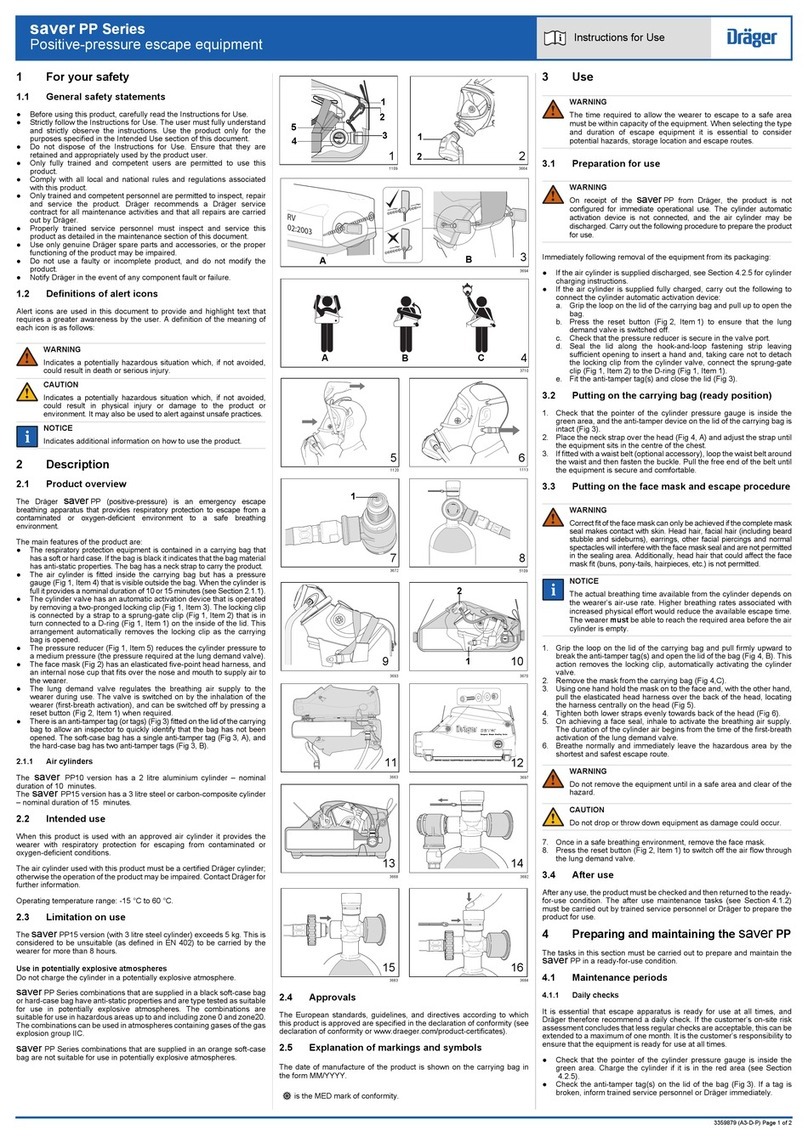
DESCRIPTION
DESCRIPTION
The OptimAir 6A Powered Air-Purifying Respirator (PAPR)
is certified by the National Institute for Occupational
Safety and Health (NIOSH) as an air-purifying device
designed for use in atmospheres which are NOT immedi-
ately dangerous to life or health (IDLH).
Five models are available:
OptimAir 6A PAPR with high-efficiency particulate fil-
ter cartridges
OptimAir 6A PAPR with chemical cartridges
OptimAir 6A PAPR with combination cartridges
OptimAir 6A PAPR with CS/CN canisters
Advantage 3000 (Model 3100) full facepiece
The OptimAir 6A Particulate Filter Cartridge PAPR may be
used with the Comfo half-facepiece, Comfo Welder’s half-
facepiece, Comfo Elite half-facepiece, Comfo Elite
Welder’s half-facepiece, Ultravue full facepiece, Ultra Elite
full facepiece, Advantage 1000 full facepiece, Millennium
full facepiece, Advantage 3000 (Model 3100) full face-
piece, Tyvek, Saranex, or the Tychem QC Hoods.
The OptimAir 6A Chemical Cartridge PAPR may be used
with the Ultravue full facepiece, Ultra Elite full facepiece,
Advantage 1000 full facepiece, Millennium full facepiece,
Advantage 3000 (Model 3100) full facepiece, or Comfo-
style half-facepieces only.
The OptimAir 6A Combination Cartridge PAPR may be
used with the Ultravue full facepiece, Ultra Elite full face-
piece, Advantage 1000 full facepiece, Millennium full face-
piece, Advantage 3000 (Model 3100) full facepiece, or
Comfo-style half-facepieces only.
The OptimAir 6A CS/CN canister may be used with the
Millennium®or Advantage®1000 facepieces only.
Not : When the Advantage 1000 Facepiece is used, the
P/N 10012413 kit and P/N 96547 adapter must be
installed on the facepiece.
Not : When Millennium Facepiece is used, the P/N 96547
adapter must be installed on the facepiece.
COMBINATION CARTRIDGES
A combination cartridge consists of particulate filter media
and chemical sorbent in one cartridge package. This type
of cartridge must be used when harmful particulate matter
as well as harmful gases and/or vapors are present.
DO NOT us combination cartridg s with a PAPR
hood. Combination cartridg s ar approv d for us
with th Ultravu or Ultra Elit full fac pi c s or
Comfo-styl half-fac pi c s only. Failur to follow this
warning can r sult in s rious p rsonal injury or d ath.
CS/CN CANISTER
A CS/CN canister consists of particulate filter media and
chemical sorbent in one canister package. This type of
canister must be used when the CS/CN is present.
CS/CN canist rs ar approv d for us only with
Advantag 1000 or Mill nnium full fac pi c s. Failur
to follow this warning can r sult in s rious p rsonal
injury or d ath.
The Ultravue Facepiece and Ultra Elite Facepiece are
available with an integral welder's lens and are available
for use with the welder's adapter. All facepieces are avail-
able in small, medium, or large. Rubber or silicone materi-
al may be selected.
The motor-blower, battery pack, and filters are worn as an
assembly on the support belt. The breathing tube con-
nects the belt-mounted assembly to the facepiece or
hood.
The respirator may be used at temperatures between 0°
and 120°F, and may be worn under flame-retardant gar-
ments. If used below 40°F, a fully-charged NiCad Battery
may not operate the motor-blower for a shift.
PRINCIPLE OF OPERATION
The motor-blower draws surrounding air through cartridges
or canisters which capture the contaminants. Purified air
passes through the breathing tube to the facepiece or
hood. Air pressure in the facepiece or hood is higher than
the surrounding air. This means that if a small leak occurs,
air will flow from inside the facepiece or hood to the out-
side air. This is referred to as positive pressure. Air flow
also provides wearer comfort.
The OptimAir 6A PAPR is powered by a Nickel-Cadmium
(NiCad) or Lithium Battery Pack. The NiCad Battery Pack
only is rechargeable. The Lithium battery is NOT
rechargeable. However, the Lithium Battery has a very
long shelf life (up to 10 years).
The rechargeable Nickel-Cadmium Battery Pack and the
single-use Lithium Battery supplies 4.5 volts to the motor-
blower. The battery pack is replaceable. A fully-charged
NiCad Battery and a fresh Lithium Battery are designed to
operate for a shift. The battery pack is compatible with
both the standard and dual-rate (fast-rate) chargers.
5TAL 804 (L) Rev. 17 - 490883

